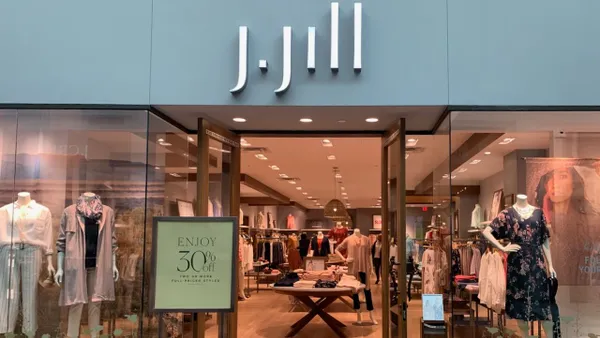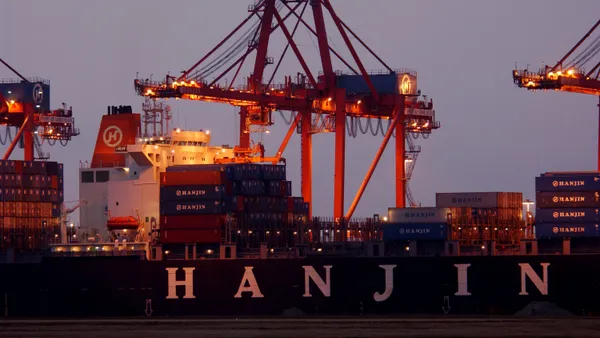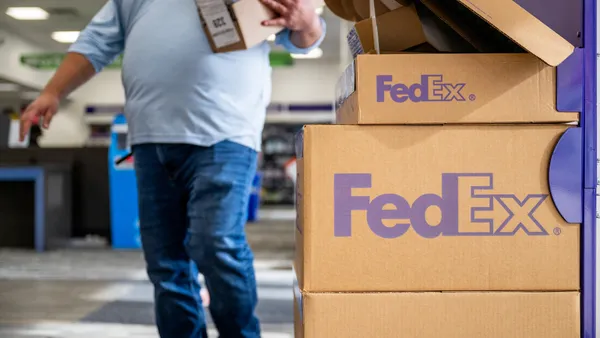Dive Brief:
- E-commerce logistics costs in the U.S. reached $117.2 billion in 2017, according to a report consulting firm Armstrong & Associates (A&A) provided to Supply Chain Dive. E-commerce costs represent 6.9% of total U.S. logistics costs, an increase from 5.2% in 2016.
- Amazon's introduction of Amazon Prime was the "turning point" for e-commerce logistics, A&A said in its report. With the promise of free two-day shipping, the online giant created a "new normal" for consumer deliveries.
- A&A named three factors — delivery speed, delivery price and assortment — as the biggest factors that have transformed e-commerce logistics and created challenges for retailers.
Dive Insight:
E-commerce still makes up a relatively small fraction of total costs in the logistics sector, at less than 7%. But e-commerce growth has completely revolutionized the way companies think about fulfillment and delivery.
Consumer demands in e-commerce have driven retailers not only to think about the last mile, but also what A&A described as "the extra mile."
In a brick-and-mortar-dominant retail environment, the consumer was the one traveling the last mile, going from home to store to purchase goods. But with e-commerce, the retailers and logistics providers are traveling the last mile to consumer's doorsteps, and going the extra mile to ensure goods are sorted into deliverable parcels.
"The well-traveled path from distribution center to store location is being replaced by a much more involved series of moves: from distribution centers to fulfillment centers to parcel hubs and sortation centers to last-mile delivery providers for residential delivery," A&A said.
The extra mile demonstrates a shift to a consumer-centric model, and the origins of that model go back to Amazon. Jeff Bezos' annual letter to shareholders includes a section called "Obsess Over Customers."
While some retailers have embraced the consumer at the center of their strategies, many others have struggled, with some forced to close their doors.
And while 3PLs are enjoying many of the benefits that come along with logistics growth, they can't turn a blind eye to Amazon. A&A predicts Amazon will "present increasing competition to 3PLs," particularly through Fulfillment by Amazon (FBA) Onsite.
Amazon's expansion won't come without growing pains, though. A&A said Amazon's primary logistics challenges will be accommodating larger volumes of shipments, expanding geographically into new markets and across borders and dealing with difficult product categories.
Despite challenges, Amazon continues to raise the bar, driving consumers to expect a "new normal" of delivery speed and price, and leaving retailers to play catch-up.















